
Content
Categories
Vessels of Inspiration
Posted September 13, 2011 | 1:42 am, by nadine
Beer glasses come in all shapes and sizes. There are tall, narrow glasses like the Pilsner glass and German Wheat Beer glass, then there are wide ones like the Shaker, Nonick or Tulip pint and there are also stemmed glasses which are mostly used for higher alcohol beers. These different shapes do serve a purpose and were designed to highlight the appearance, aroma and flavour of various beer styles. The slender shape of the Pilsner glass, for example, will highlight its golden colour and lively carbonation. The narrow lip on the glass will also protect this delicate beer from oxygen. Wider pints and stemmed glasses have a wider rim. These are designed so that the drinker’s nose is in the glass with every sip in order to expose a wider spectrum of aromas and flavours.
There are some beer glasses out there, however, whose purpose is not so clear. They are made from various materials, and have unusual shapes. Some of these glasses were designed to complement beer, others were a result of problem solving, and some of them are an exercise in creativity and aesthetics. Each one was inspired by something different and together they result contribute to a fascinating collection of contrasting glassware:
Kwak Glass
Belgium
Inspired by necessity
Most people have seen the Kwak glass on display in a pub. This unusual glass, used to serve Bosteels Brewery’s Kwak beer, has an hourglass shape and cannot stand on its own. It comes with a wooden support on which the glass hangs. While this may seem quirky, the shape this glass is traditional and dates back to the eighteenth century, when it was born out of necessity. According to Bosteels, the Napoleonic code forbade coachmen from drinking beer with their passengers. They were required to stay in their seats. Brewer Pauwel Kwak, who operated a rest stop called “De Hoorn” at the time, came up with an innovative solution for coachmen by providing a glass that could be suspended from the side of the carriage.
While Bosteels Brewery only sells the Kwak Glass in gift packs, it can be found online on specialty glassware sites.
Cowboy Boot Glass
Canada
Inspired by a theme
Every year, in September, the Québec city of St-Tite hosts a large outdoor rodeo festival called “The Festival Western de St-Tite”, which is “aimed at re-creating an authentic Country Western atmosphere.” The festival, which started in 1967, attracts hundreds of thousands of visitors from all over. St-Tite is also home to award-winning À la fût craft brewery. When the brewer, Françis Foley, spotted a cowboy boot-shaped glass at a flea market, he knew it would be a perfect glass for the festival. He found the glass through his supplier and the rest is history! The cowboy boot glass has become a collector’s item for festival participants and is printed with a different logo every year.
The Cowboy Boot Glass is available at the brewpub and can be shipped. There is also a list of retailers who carry À la fût beer as well as the cowboy boot glass at www.alafut.com
Who’s? Glass
England
Inspired by environmental concerns
Who’s? Glass is a recycled glass company. This family-run company makes beer glasses out of a variety of empty beer bottles, which are all sourced within a ten-mile radius of the studio. According to co-owner, Matthew Persson, the idea for the company stems from his Swedish heritage. Recycling glass is commonplace in Sweden, in fact, a recent study showed that close to 100% of the glass jars and bottles purchased in Sweden in 2008 were collected for recycling. As a child, Persson was very aware of the environmental concerns attached to recycling glass and learned about all forms of glassmaking and recycling. The Who’s Glasses are made using traditional glassmaking techniques and are flared at the top to assist with head retention.
A variety of Who’s? Glasses can be purchased at www.whosglass.co.uk
Teku
Italy
Inspired by function
Teo Musso is the founder of Baladin Brewery in Italy. He collaborated with Italian sensory analysis expert Kuaska to create the Teku glass (the name Teku is an amalgamation of the names ‘Teo’ and ‘Kuaska’.) Musso’s goal in creating the Teku was to come up with an industry standard glass that could be used for the sensory analysis of all kinds of beer. He was inspired by the ISO glass with is the glass that is used to conduct the sensory evaluation of wine. Musso made a range of prototypes and had Kuaska evaluate them all. The resulting glass is both elegant and functional and is carried in many Italian specialty beer bars and brewpubs.
The Teku is available online at: www.birraland.it
Port-A-Pint Beer Glass
U.S.A.
Inspired by practicality
The Port-A-Pint retractable cup is a plastic beer glass that collapses down to a 9.5 cm x 9.5 cm x 4 cm ring, and comes with its own storage case. Touted as “the anytime, anywhere beer glass”, the Port-A-Pint is clearly created to be portable. Collapsible cups have been around for a while. In the later half of the nineteenth century, they were made of metal and often referred to as bicycle cups or vest cups. Like these earlier models, the Port-A-Pint opens with a flick of the wrist and is designed to hold its shape when it is full. The Port-A-Pint holds twenty ounces yet fits easily into a pocket, so that its possessor is always prepared for impromptu keggers and spontaneous drinking of all kind.
The Port-A-Pint is available online at: www.neatoshop.com
Hopside Down Beer Glass
U.S.A.
Inspired by aesthetics
The Hopside Down Beer Glass is a double-walled glass that creates the illusion of an upside down beer bottle in the glass when you pour beer into it. This intriguing borosilicate glass is produced by a company that carries a range of novelty glasses, including a “bombs away” shot glass with a bomb-shaped interior, a “wine stein” which creates the illusion of a wine glass within a beer stein, and a “half full” glass which only fills half way (this company also produce the Port-A-Pint mentioned above). When it comes to beer consumption, though, the double walls on this 12oz glass do serve a purpose: they prevent the warmth from your hands to affect the temperature of the beer inside the glass.
The Hopside Down Beer Glass is available online at: www.perpetualkid.com
Silipint
U.S.A.
Inspired by innovation
The Silipint is a pint made out of silicone. The owners of Silipint also run a company that makes products for dog owners, called Tazlab, which released both a stretchable nylon dog collar a foldable silicon dog bowl. Their work with Tazlab inspired them to think of innovative ways to use various materials. The Silipint was created for use at festivals and campgrounds that don’t allow glass. It is durable, machine-washable, and can be folded so that it is very compact. It can also be transported without any concerns about chipping or shattering. The 16oz Silipint comes in a wide range of fun colours, as well as in a frosted white colour, which allows the drinker to get an idea of the colour and head of the beer.
The Silipint will soon be available online at: www.silipint.com
The Klein Stein
U.S.A.
Inspired by math
The Klein Stein is the creation of Cliff Stoll, who has been making Klein Bottles for the past decade. An area of mathematics called topology, which examines surfaces, dimension and transformation, inspires this fascinating glass. It is, in theory, a one-sided, zero-volume surface that requires four dimensions. In Stoll’s three-dimensional interpretation, beer flows from the glass through the handle into an inner chamber. Stoll playfully explains: “There’s ~230 ml in the outer chamber (which topologists will recognize as equivalent to the inner chamber) and ~250 ml in the inner chamber (which topologists claim to be the same as the outer chamber). However, the outer chamber (which topologically connects to the inner chamber) is a real challenge to clean, so maybe this is one stein that’s best left on the shelf.”
The Klein Stein is available online at: www.kleinbottle.com
Mea Culpa Glass
Belgium
Inspired by a dream!
When Michel Eftekhari came up with the recipe for Mea Culpa beer, he felt that it was a unique product and required a distinct glass. He looked around and was not able to find a glass that truly reflected the spirit of his beer. Then, one night, following an evening of heavy drinking, the ideal glass came to him in a dream! He woke up at four in the morning and, in a state of semi-consciousness, sketched the glass onto a piece of paper. The next morning, when he saw the sketch, he decided to follow his dream and find someone to manufacture his ideal glass. The whimsical Mea Culpa glass is made from Bohemian crystal in the Czech Republic, and, according to Eftekhari, is described by some as the “sexiest beer glass in the world.”
The Mea Culpa Glass is available online at: www.beermania.be
Publication: TAPS Magazine
Date Published: Winter 2010



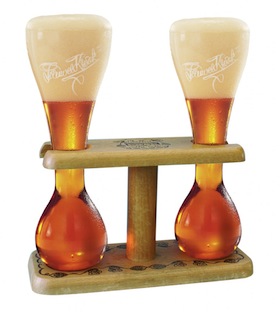

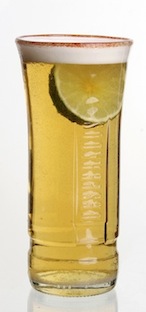


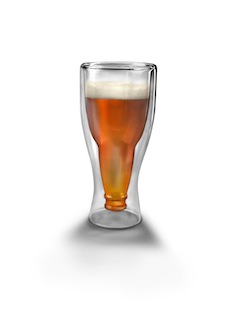
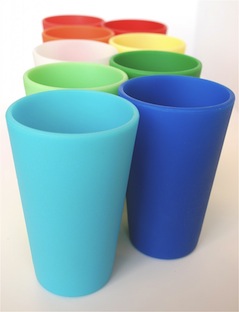
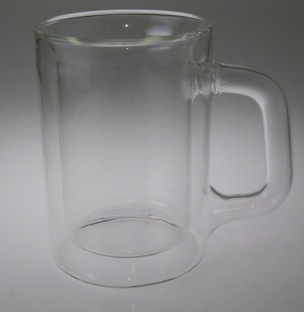
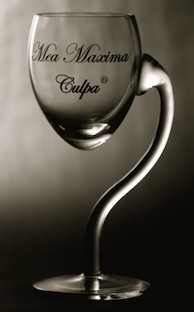
No comments yet. You should be kind and add one!
Leave a Comment
The comments are closed.